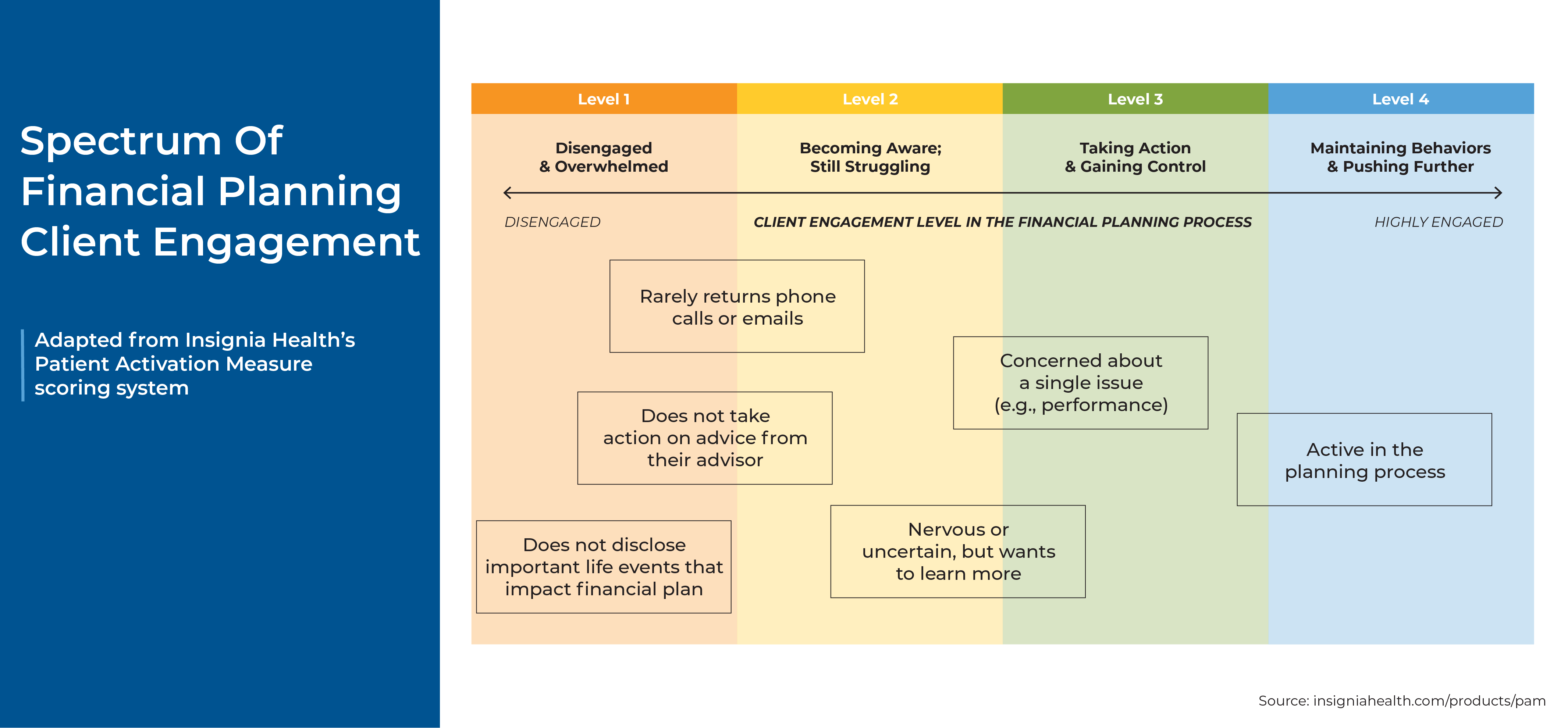Financial advisors will sometimes talk about ‘bad’ clients who don’t act on the advice being provided. But the reality is that they may not necessarily be ‘bad’ clients; rather, their behaviors are a sign that they are not fully engaged in the planning process because other aspects of their life take precedence over managing the tasks needed to accomplish their financial planning goals, they lack the knowledge to make an informed decision, or they are procrastinating for any number of reasons. But by focusing on advice engagement strategies and encouraging clients to become more engaged in the planning process, advisors can help clients become more motivated to take action, which will ultimately serve to improve their planning outcomes.
Advice Engagement is a framework that can help advisors address the challenge of motivating clients. As an emerging concept, Advice Engagement is designed to improve the delivery of advice and encourage clients to become more active in the financial planning process, with the ultimate goal of improving the likelihood that the client will accept and follow the advice.
Client engagement in the financial planning process is not a clear-cut binary characteristic; rather, it can fall onto a dynamic spectrum of engagement levels. While understanding the variability of clients can help to uncover who the advisor’s disengaged clients may be, it can also help advisors identify the root causes of the disengagement so that they can take the right approach to address the disengagement. For instance, clients will show different levels of ‘capability variability’, or the range of financial acumen they bring to the table. While less capable clients will likely show little interest in financial planning concepts and can be encouraged to engage in the process through educational content that helps them better understand the potential outcomes of their plans, a more highly capable client might question or even challenge the advisor’s recommendations. For this client, a general outline of their plan’s intended outcomes may not be as engaging as hypothetical illustrations and a stimulating debate about the efficacy of their plan’s detailed mechanics.
To help clients advance to higher levels on the engagement spectrum, advisors can apply Advice Engagement strategies to 4 key areas: fact finding (e.g., by breaking the data-gathering process into stages to collect information incrementally); advice delivery (e.g., by ensuring that clients receive information in a way that is useful for them); education (e.g., by keeping a variety of materials on hand that advisors can use to educate clients with different learning styles); and ongoing service (e.g., by using client portals or email throughout the year to keep clients focused on the steps they need to take to complete their action items). Notably, advisors do not necessarily need to create these systems and content on their own, as a wide range of Advice Engagement software tools are available that support advisors in all 4 of the above areas.
Ultimately, the key point is that Advice Engagement can serve as a vital framework to help advisors focus on understanding their clients’ needs and improving their outcomes. Through internal processes developed by the advisor with the Advice Engagement framework in mind and with the support of Advisor Fintech tools to address the needs of clients at all engagement levels, advisors can provide value through fact finding, advice delivery, education, and ongoing services that keep clients engaged throughout the financial planning process, all while scaling for growth at the same time!
Read More…


